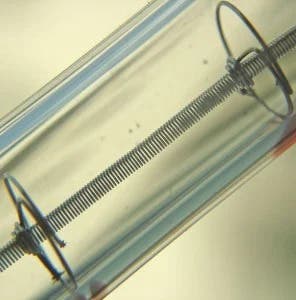Troubleshooting Common Problems With Halogen Lightbulbs
Halogen lighting, although they look like incandescents, are slightly different in order to make them last longer. However, they can still have a variety of problems which reduce their life span, and so here’s a run down of some common problems and solutions.
p>
Problem: Blackening or Burning Out of Bulb
Cause #1: Contaminated Quartz: Organic material, like grease from fingers, salts and alkalines (ash) can carbonize when they touch the outside of the bulb. This causes dark spots which absorb radiation from the filament which causes excessive heat and breakages, or for the lamp to burn out prematurely.
Solution: Take care not to touch the bulb when fitting them, such as using the original packaging or using rubber gloves. If the bulb has been touched, clean them carefully with a little alcohol or distilled water, with a soft cloth.
Cause #2: Off-quality and/ or old bulb: this is noticeable by a darker smoke clouding the bulb.
Solution: Buy new bulbs that are better quality, such as Sylvania, GE or Philips.
Cause #3: Melting or breakage of a thin spot in an aging filament. These thin spots are caused by the uneven evaporation and redepositing of the tungsten in the bulb.
Solution: These are simply how the bulbs work and so there is no solution other than to buy new bulbs with new filaments.
Problem: Cracks and Explosions
Cause #1: High Temperature: Halogens run at very high temperatures which leads to excessive heat and pressure being produced, bursting the bulb.
Solution: Don’t run the lights for too long, and allow them to fully cool down before switching them back on.

Flickering/ Dimming
Cause #1 Unreliable wiring, poor circuitry or faulty voltage conversion.
Cause #2 ‘Unclean’ bulb as mentioned above
Solution: Bring an electrician in to look further into the problem.
Filament ‘notching’ or ‘necking’
‘Notching’ is an irregularity in the filament of halogen lighting which can drastically reduce the bulbs life span.
Cause #1 Bulbs running at lower temperatures than are required for optimum tungsten evaporation. This lower temperature is caused by excessive or continuous dimming of the bulbs. Also, low amperage lamps with small filament wire sizes have been found to be more susceptible.
Solution: Unfortunately, this is practically unpredictable. The only option for this problem is to keep spare bulbs on hand for any emergencies.

Further Resources:
More on ‘Notching': https://www.prolampsales.com/blogs/specialty-architectural-lighting/is-notching-blowing-out-your-bulbs-early/
Other troubleshooting guides:
Starters and Ballasts in fluorescent tubes: http://www.lampshoponline.com/advice/how-to-fix-slow-to-start-flickering-or-faulty-flourescent-tube-lights
Find a qualified electrician near you: http://www.electricalsafetyfirst.org.uk/find-an-electrician/
Which? advice on how much an electrician should cost: http://local.which.co.uk/advice/cost-price-information-electricians
More about how Halogens work here: http://www.edisontechcenter.org/halogen.html
Published 2015/09/08
